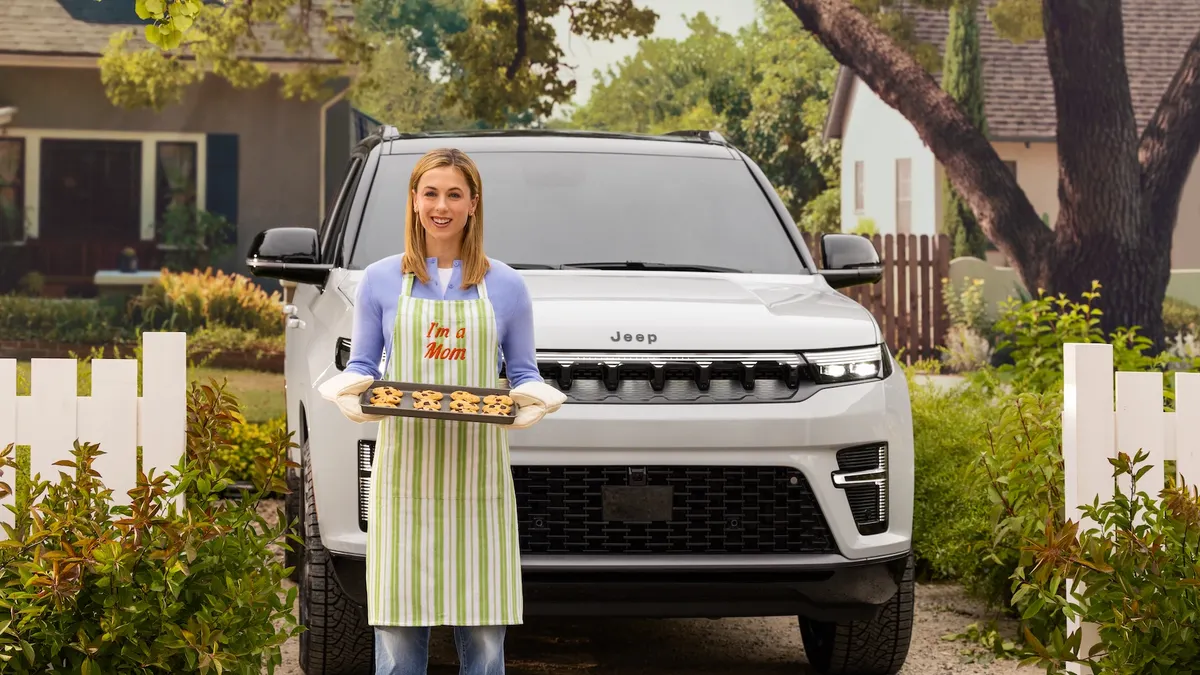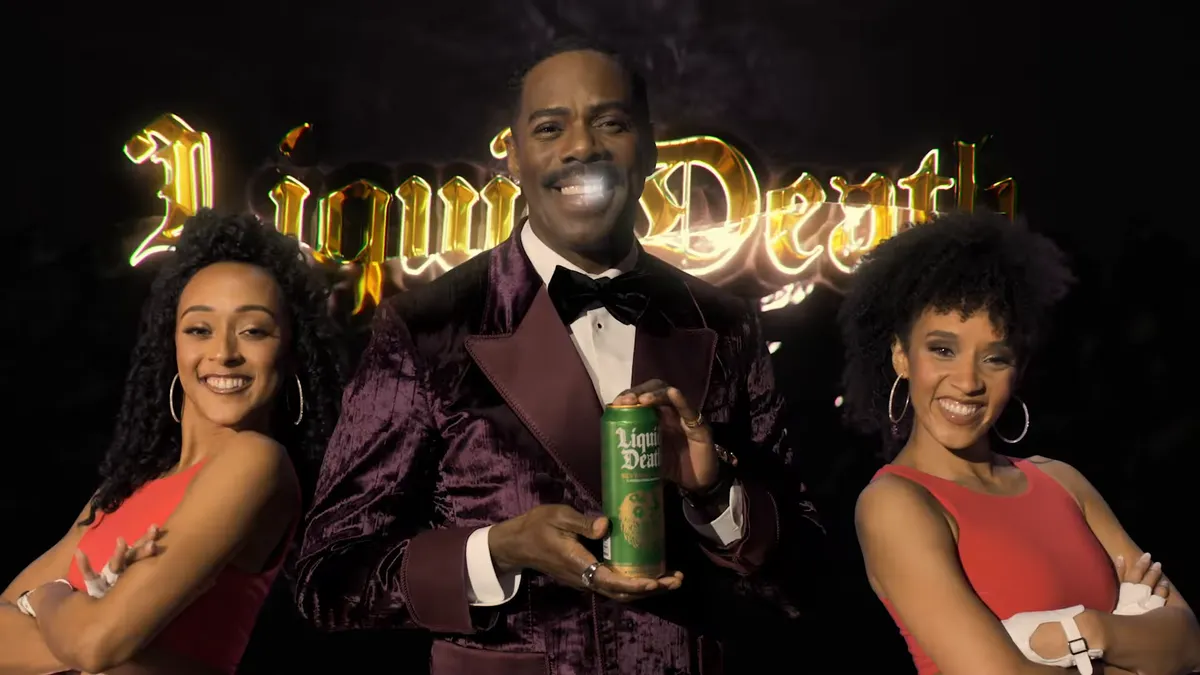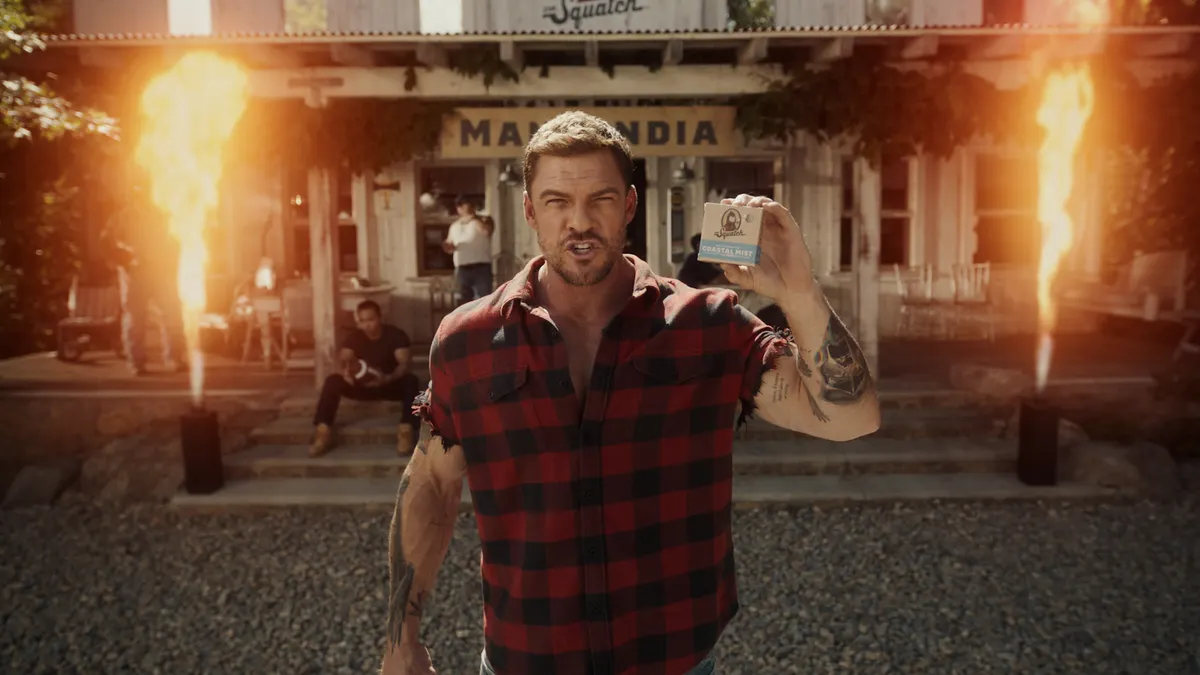Campaign Trail is our analysis of some of the best and worst new creative efforts from the marketing world. View past columns in the archives here.
A prime challenge in reaching financial goals is staying motivated over the years, especially following a rocky year when many people's circumstances were murkier than ever.
Mint, the personal finance app owned by Intuit, last week wrapped up its first brand campaign, designed to pep up consumers as they navigate their savings journeys and remind them that even the smallest steps toward a better future are worth celebrating. "Any Day Can Be Your Big Day" kicked off on Jan. 25 and grew Mint's TikTok following from 0 to more than 11,000, snagging nearly 33 million impressions over six weeks.
The campaign espoused a positive, playful tone that's historically less common in financial advertising. That attitude was intentional, as the effort targeted "enthusiast millennials" between 25 and 35 years old with major life events coming up.
"Millennials have been through economic setbacks that have made them debt-ridden, underpaid, and overworked — and to top it all off, the best financial advice they ever received was to eat less avocado toast and drink fewer lattes," said Keri Danielski, head of communications at Mint.
A different approach
The goal of this campaign, as well as Mint's overarching objective, was to break from the traditional ways in which financial companies support their customers. A key piece of the puzzle was changing the tone of conversations around money, according to Varun Krishna, senior vice president and head of Mint.
"We believe finances don't always have to be such a grave, taboo topic. We want people to have hope, against any odds," he said via email. "So many financial brands put goals up on a pedestal and leave you with no help to get there, leaving real change feeling out of reach. We wanted to challenge [that notion], empowering individuals to embrace the possibility of success and coach them toward making it real one step at a time."
"Any Day Can Be Your Big Day," developed with agency of record Outcast and Scholar for video production, centered around a 30-second anthem spot that shows three characters celebrating small wins: saving $215 toward a down payment on a house, chipping away at student loan debt, and identifying overspending and getting back on track. Each of the three stories in the spot were inspired by real Mint users and appeared as separate clips across the company's digital channels and connected TV. Paid ads ran on Facebook, Instagram, Twitter and YouTube, while the campaign was also supported with targeted influencer partnerships and media deals with Refinery29 and Vice. A contest on social media drummed up user-generated content around people sharing their real "money wins" with hashtag #EmpowerMint for a chance to win $500.
The launch of Mint's TikTok channel was one of the strongest elements of this campaign, allowing the brand to directly connect with users where they spend time, per Danielski. Some of Mint's entertaining — yet helpful — messaging on TikTok was produced in-house by a certified financial planner who shared money mantras and tips. Several creators were selected to post additional videos in order to reach their online networks of prospective Mint users.
In the same spirit of exploring burgeoning platforms like TikTok, the financial app used its latest campaign to test out video-messaging platform Cameo. Mint was one of the first brands to test Cameo for Business, teaming with personalities such as NSYNC's Lance Bass, sportscaster Erin Andrews and Brian Baumgartner, of "The Office" fame, to help motivate users with personalized shoutouts.
Marrying the unsexy category of financial services with the silly tone that's often present on Cameo aligned with the campaign's broader intent to evolve typical conversations around money.
"People get excited when they see a celebrity, even if it's a C-list celebrity, especially if they're talking to them and celebrating them," Danielski said. "This millennial crowd is really starting to get into Cameo. It is a fun platform. People engage with it and like that human interaction."
Mint has previously relied more heavily on earned media coverage and owned social content, according to Danielski. At the end of 2020, the app sent users a recap of their spending — à la Spotify's year-end Wrapped feature — with guides to goal setting and tips for starting off the new year. Weeks later in January, Mint launched a new version of its iOS app with better tracking tools and personalized insights based on a user's preferences and behaviors to give a more individualized view of their finances. The launch was supported by owned social content with the #EmpowerMint hashtag as well as blog posts showcasing stories from real Mint users.
Speak to both
Electing to run its first campaign just weeks into the new year — and 10 months into the pandemic — seemed like a natural fit for the personal finance app, as January typically sees many consumers reassessing their budgets for the coming year.
"Our first campaign couldn't have come at a more critical time. Our nearly 25 million users are experiencing one of the more fraught times in our collective financial history," Krishna said. "Mint has long served people across a broad financial spectrum, and this past year we saw an even larger gap in our customers' financial situations."
When first developing the campaign last August, Mint and its agency partners considered the range of consumer experiences from the past year, while working to weave in the campaign's motivational and supportive themes. Many people are facing unemployment or are working to make ends meet, while others have maintained their jobs and are saving more than ever while working from home.
"Mint is a partner to both [types of consumers], so how do you speak to both about money?" Krishna said. "For us, it's about empowerment. And we thought it really important to ground the campaign in the experiences of real Mint users."






















